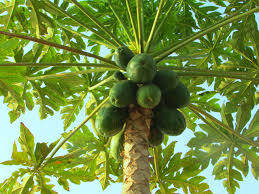
Rice noodle is a thin and translucent noodle made using rice flour and water. It also includes tapioca or corn starch to improve the transparency and gelatinous texture of the noodle. The noodles are usually presoaked and boiled in water to be used as the main ingredient for a noodle dish or are deep-fat fried into crispy strands to complement salads.
They are further seasoned with herbs, spices and oils to obtain the desired flavor and are commonly available in fresh, frozen and dried variants, in numerous shapes, thicknesses and textures. Rice noodles are also a rich source of antioxidants, magnesium and selenium that can minimize the risks of developing cancer, cardiovascular diseases and other chronic ailments.
The global rice noodles market size was USD 3.96 Billion in 2021 and is expected to register a revenue compound annual growth rate (CAGR) of fourteen point one percent (14.1%) during the forecast period. Increasing demand for gluten-free products and growing popularity of ready-to-cook and instant food are factors expected to drive market revenue growth during the forecast period.
In addition, many consumers have become highly health-conscious in recent years. The growing demand for nutritious food among a huge section of the worldwide population is expected to boost rice noodles market.
Breakup by Cooking Method:
Instant
Conventional
Breakup by Product:
Vermicelli
Stick
Wide
Others
Rice is the staple food of more than half of the global population, with the Asian, Sub-Saharan African, and South American regions being the largest consumers.
Rice is an increasingly important crop in Nigeria. It is relatively easy to produce and is grown for sale and for home consumption. In some area’s there is a long tradition of rice growing, but for many, rice has been considered a luxury food for special occasions only. With the increased availability of rice, it has become part of the everyday diet of many in Nigeria.
There are many varieties of rice grown in Nigeria. Some of these are considered 'traditional' varieties, others have been introduced within the last twenty years. Rice is grown in paddies or on upland fields, depending on the requirements of the particular variety; there is limited mangrove cultivation.
New varieties are produced and disseminated by research institutes, or are imported from Asia. Some varieties of rice grown in Nigeria includes Fadama rice, Upland rice, Lowland rice and Indigenous red grain specie (Oryzaglaberrina).
Nigeria is the largest producer of rice in Africa, producing about eight million, four hundred and thirty-five thousand (8,435,000) tons annually, followed by Egypt, Madagascar, Tanzania and Mali according to the Food and Agriculture Organisation of the United Nations (FAO).
The demand for noodles is high in Nigeria as it is a popular staple foods. The demand for the product cuts across social, religious, age and cultural strata. Nigeria’s enormous population estimated at two hundred million (200,000,000) is one of the factors that has led to the increase in demand of well packaged foods.
Noodles serve as a ready to eat food because of the ease of preparation. This makes the market for noodles enormous. The driving force for production and marketing of cassava based noodles is the challenge faced by the industry in the rising cost and availability of its primary raw material which is the durum wheat due to the high global demand for durum wheat, placing pressure on the commodity subjecting it to erratic price fluctuations.






















